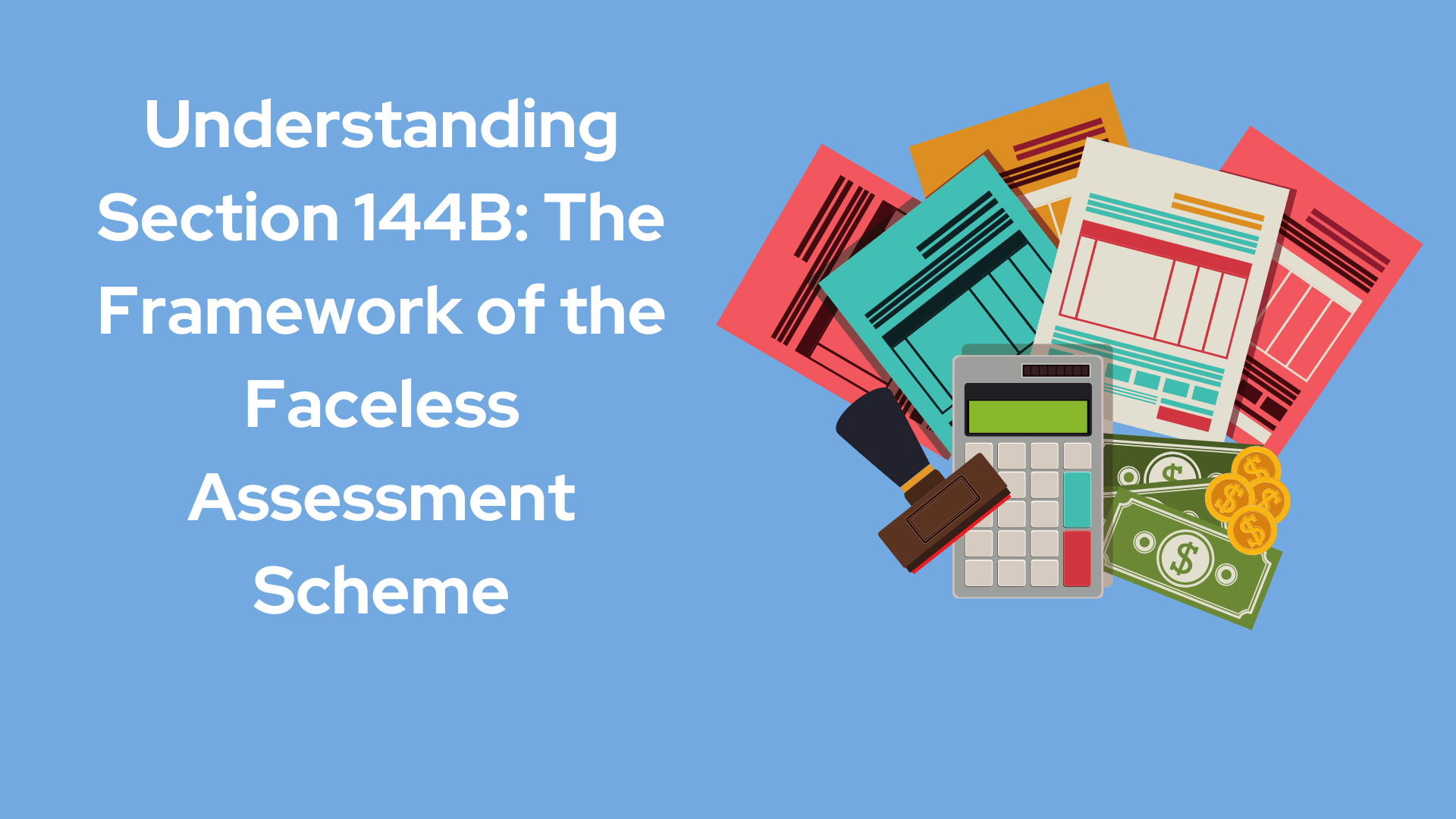Understanding Section 144B: The Framework of the Faceless Assessment Scheme
The Faceless Assessment Scheme under Section 144B of the Income Tax Act is a significant reform in India’s tax administration aimed at improving transparency and efficiency in the assessment process. This scheme, introduced as part of the E-Assessment Scheme of 2019, signifies a shift from the traditional method of face-to-face tax assessments to a more digital and anonymous process. Here’s an in-depth look at Section 144B and how it transforms the tax assessment landscape in India.
The Genesis of Section 144B
The Government of India initiated the Faceless Assessment Scheme to minimize the interaction between taxpayers and tax authorities, thereby reducing the chances of corruption and undue harassment. Section 144B of the Income Tax Act provides the legal framework for this scheme, ensuring that tax assessments are conducted in a fair, transparent, and efficient manner.
Key Features of Section 144B
- Digital Interface: The core feature of the Faceless Assessment Scheme is its reliance on digital communication. All communications between the taxpayer and the Income Tax Department are conducted electronically. This includes the issuance of notices, submission of documents, and the passing of orders.
- Randomized Allocation: To eliminate any biases, the cases for assessment are randomly allocated to assessment units through an automated system. This random allocation ensures that neither the taxpayer nor the assessing officer has any prior information about each other.
- Team-Based Assessments: Unlike the traditional method where a single assessing officer handles a case, the Faceless Assessment Scheme employs a team-based approach. Multiple units such as Assessment Units, Verification Units, Technical Units, and Review Units work together to ensure a thorough and unbiased assessment process.
- Faceless Appeal: The scheme extends to appeals as well, where a faceless appeal mechanism has been introduced. This ensures that the appeal process is also conducted in a transparent and efficient manner, free from any potential biases.
Read: Adani Group Plans to Capitalize on Growing Opportunities In The Growing Sector
Process of Faceless Assessment
The process of faceless assessment under Section 144B is designed to be seamless and user-friendly. Here is a step-by-step breakdown:
- Issuance of Notice: The assessment process begins with the issuance of a notice by the National E-Assessment Centre (NeAC). This notice is sent to the taxpayer’s registered email address or through the income tax department’s online portal.
- Submission of Response: Upon receiving the notice, the taxpayer is required to submit the requested information and documents electronically within the specified timeframe. This response is then forwarded to the Assessment Unit assigned to the case.
- Verification and Technical Assistance: The Assessment Unit may seek assistance from the Verification Unit for verifying the submitted documents and information. If required, the Technical Unit provides expertise on complex issues like transfer pricing, international taxation, etc.
- Draft Assessment Order: Based on the inputs received, the Assessment Unit prepares a draft assessment order. This draft is then reviewed by another Review Unit to ensure accuracy and fairness.
- Final Assessment Order: After the review, the National E-Assessment Centre (NeAC) issues the final assessment order to the taxpayer electronically. If any additional tax is payable, the taxpayer is notified accordingly.
Benefits of the Faceless Assessment Scheme
The implementation of Section 144B brings numerous advantages:
- Enhanced Transparency: The digital and team-based approach ensures that the assessment process is transparent, minimizing the scope for any manipulations or unfair practices.
- Reduced Litigation: With a standardized and unbiased assessment process, the chances of disputes between taxpayers and the tax department are significantly reduced, leading to fewer litigations.
- Ease of Compliance: The online submission of documents and responses simplifies the compliance process for taxpayers, saving time and effort.
- Improved Efficiency: The use of technology and the collaborative approach among different units enhance the overall efficiency of the tax assessment process.
Challenges and Criticisms
While the Faceless Assessment Scheme under Section 144B has been widely appreciated, it is not without its challenges:
- Technical Glitches: As the entire process is digital, any technical issues or glitches in the system can cause delays and inconvenience to taxpayers.
- Limited Personal Interaction: Some taxpayers prefer direct interaction with assessing officers to clarify their queries and concerns. The faceless nature of the scheme eliminates this possibility.
- Adaptation and Training: Both taxpayers and tax professionals need to adapt to the new digital process, which requires adequate training and familiarity with the online system.
Read Also: Understanding Section 53 of the Insolvency and Bankruptcy Code (IBC)
Conclusion
Section 144B of the Income Tax Act, through the Faceless Assessment Scheme, represents a progressive step towards modernizing India’s tax administration. By leveraging technology to ensure transparency, fairness, and efficiency, this scheme aims to build trust between taxpayers and the tax authorities. Despite the initial challenges, the long-term benefits of this digital transformation are poised to create a more robust and taxpayer-friendly environment.
The successful implementation of the Faceless Assessment Scheme will depend on continuous improvements in the digital infrastructure, effective training for stakeholders, and prompt resolution of any technical issues. As India moves forward in this digital era, Section 144B stands as a testament to the country’s commitment to reform and innovation in tax administration.











